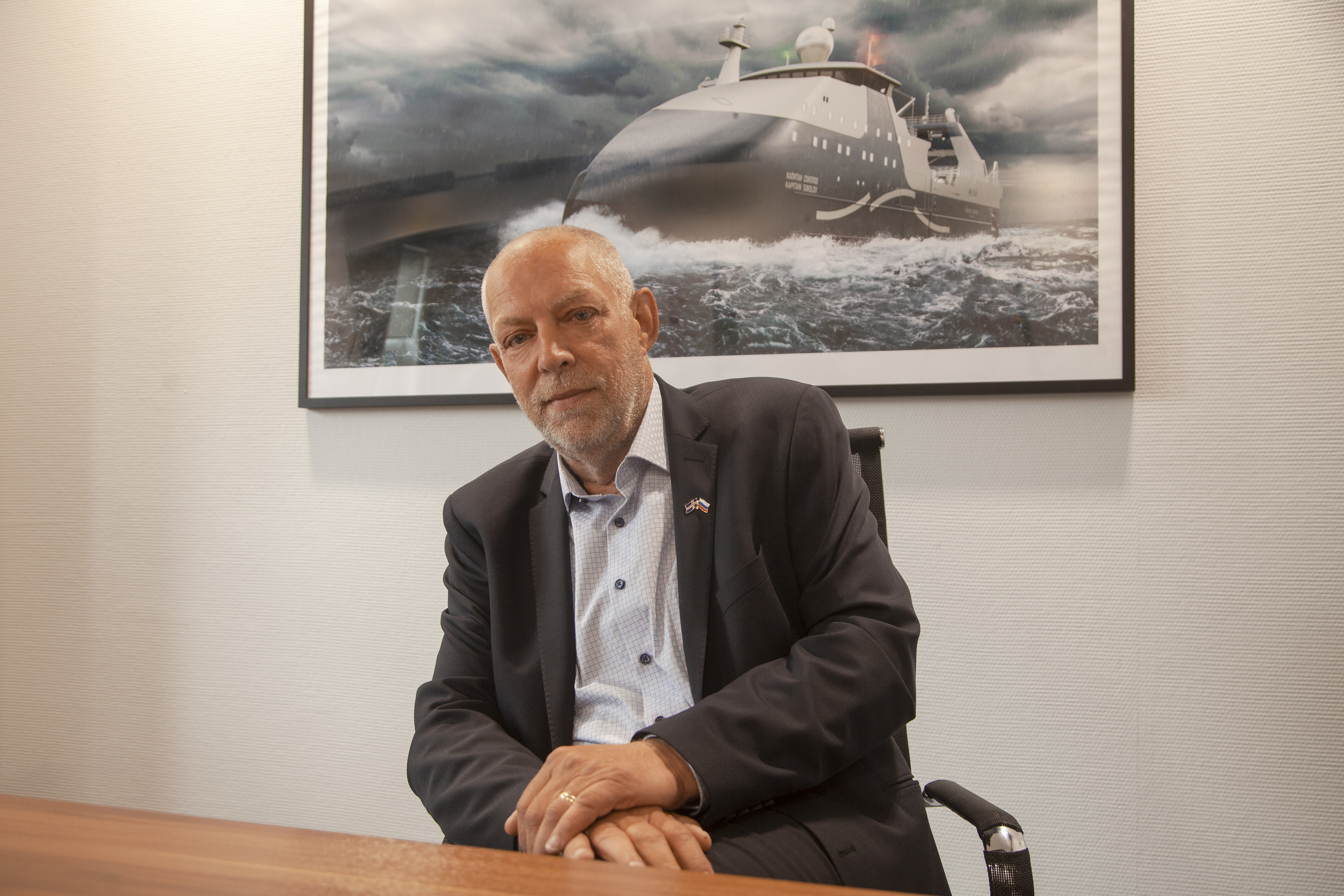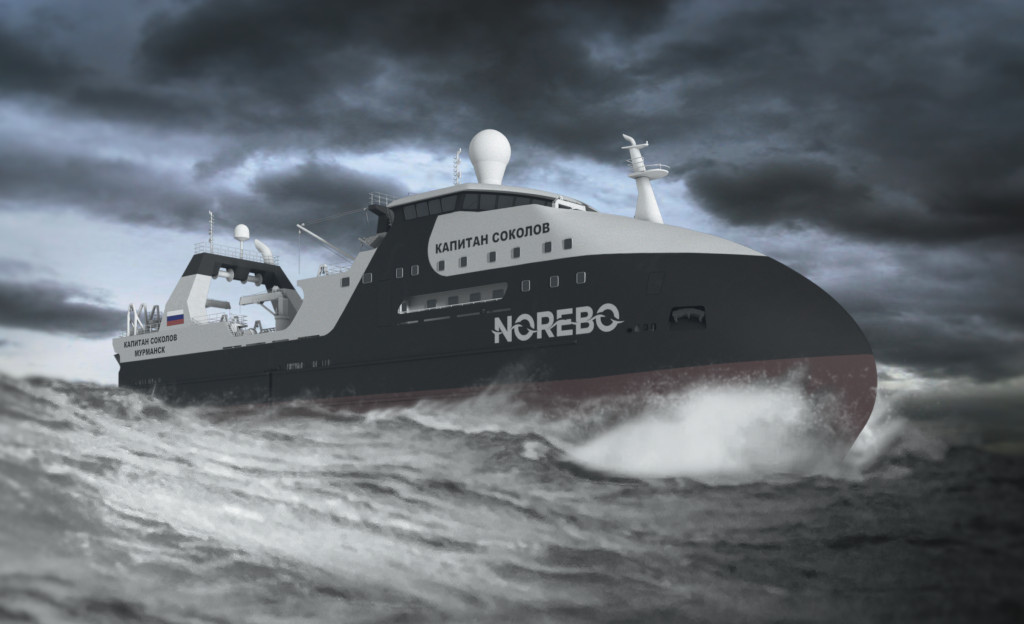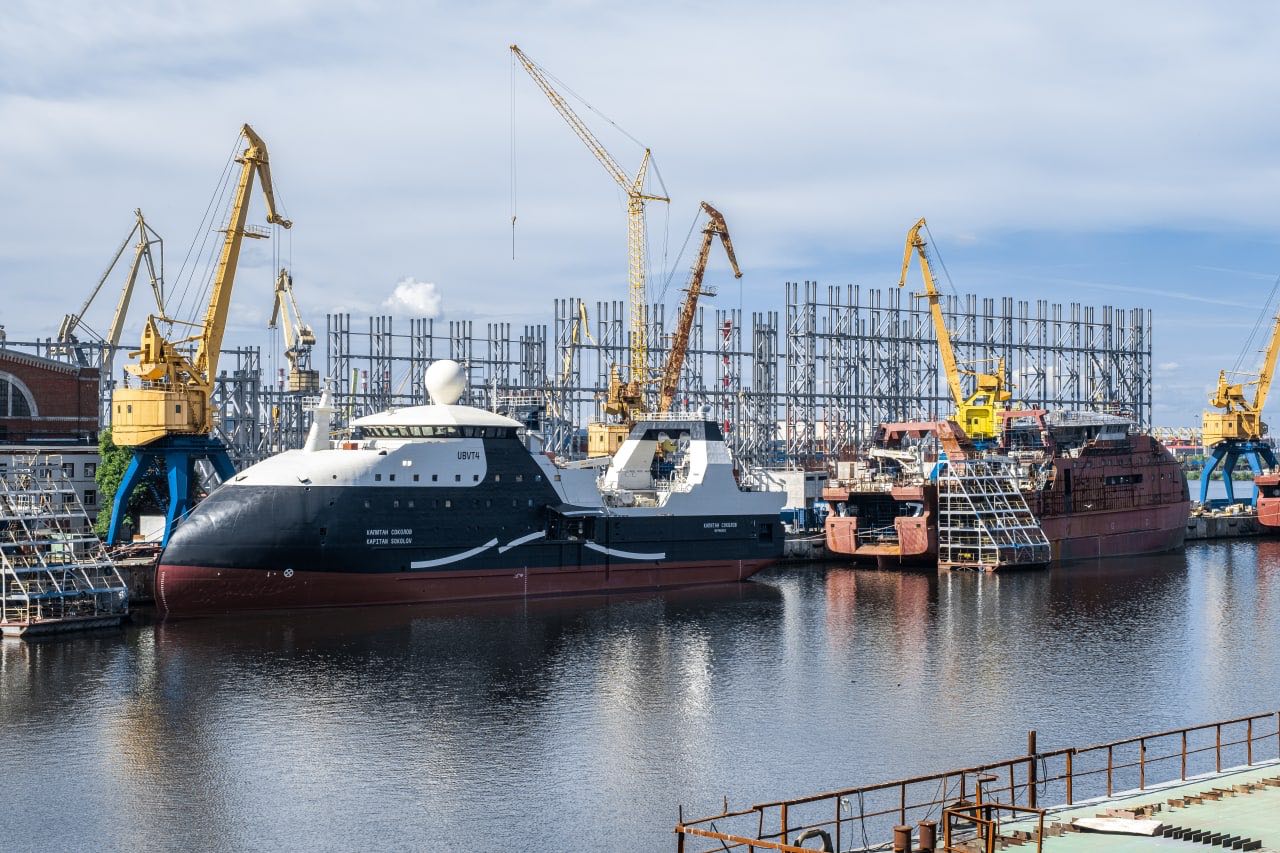Icelandic company Nautic Ehf came to Russia almost five years ago having established a design bureau focused on creation of fishing ships according to European standards. In his interview with IAA PortNews, Alfred Tulinius, Chief Designer and Chairman of the company, explains why it is interesting and profitable for a European company to work in Russia.

- Mr. Tulinius, Nautic has a 40-year experience of work in Iceland. How did the idea to start this business in Russia come to you?
- It actually came quite naturally because we made an agreement with Norebo to design six trawlers for the Northern Region and four for the Far East.
Knowing that the engineering aspect of creating fishing ships in Russia was limited I decided to take all the proceeds from that Norebo deal and pour it into the technology transfer into Russia.
There were few things that actually came into the question. The access to a quantity of engineers in naval architecture and ship design in the western part is somewhat limited. In Russia, however, you have quite an assortment and quite a big quantity of the population that have educated themselves in engineering related to shipbuilding and ship design. But this education is very wide with no specification. When designing ships, and Russia has built quite a few of them, you come to a common denominator with the shortage of personnel, even in western yards. There is only a few specialized in fishing vessels.
I knew that taking on the project I would take care of it from the beginning to the end including all the side roads need to travel to get to the final result. That is why a decision on localization was made and Nautic Rus LLC was established.
- How many employees does the company number?
- When we established the company there were about 10 people. Then very quickly we expanded to 30 and now there are about 60 employees.
This is not a one-way road. Yes, we have poured the proceeds from the contract into establishment of a new Russian company and even, we can almost say, subsidized the development of RKD (workshop design documentation – Ed.) of our project.
For a long period of time, designing of fishing vessels was not existent in Russia. Therefore, the problem was with designers and yards, and even owners in some cases.
- Do you consider ship owners as an element of the entire production chain?
- I can categorize owners in different categories: educated owners, semi-educated ones and totally ignorant clients. We were lucky to have an educated client, Norebo.
What I mean by educated clients is that you can have a dialogue with them, they would understand what we are talking about and they respond subsequently basing on that understanding.
A semi-educated client knows what he wants but he doesn’t know all the possibilities available in the market to obtain what he wants. So you act more on a consulting basis with him to open eyes to different solutions and then he either takes it or he decides to do it the old way.
Finally, a request from a totally ignorant client can look as follows: “I’m a fisherman, I need a fishing vessel but I do not know what exactly I want - do something”.
- Let’s return to the issue of personnel. How did you select your employees?

- Knowing about the absence of fishing shipbuilding in Russia it was critical. In the beginning I had interviews with a lot of experienced designers and I quickly came to a conclusion that these are what I call ‘designosaurs’ – basically people of old school with contaminated mentality and contaminated ideas. So, I targeted at young people. Keeping in mind that I wanted to avoid those old people with bad habits there was one missing thing in my thinking – all those young people have been taught in schools by the old ones who have somewhat transmitted those bad habits. But we have gradually managed to build new ways of work.
It was good for me to make this way together with my personnel. Computer skills, knowledge of software to navigate all these tricky things – that is basically something that they gave me. There is even some generation shift and I sometimes see that the younger generation thinks that those able to manage computer systems can manage basically everything. But I am sure you can never leave thinking. You cannot just dive into 3D modeling something without applying a thinking.
We are now working more like a western type design bureau and I don’t understand why we shouldn’t do that.
- Are there any existing vessels completed by Russian shipyards?
- We started our business in Russia four and a half years ago and we are still struggling with building the first one.
However, there is one of our ships in Russia. The ship called KILDIN was actually designed by Nautic and built for an Icelandic owner, then it was sold to Norebo.
- Was it reclassed? What was the procedure?
- KILDIN is a very good example because it was built according to Bureau Veritas rules and then, when it was sold to Norebo, it was reclassed according to a usual procedure. That reclass procedure was like just a click. All Icelandic project papers were submitted to RS class and they just accepted it as Russian because the rules are totally the same.
- So, the RS requirements are not tougher than those of western classification societies, are they?
- I used to hear all those scary stories about how difficult Russian class was. My engineers I was working with were talking about them. I soon found out that this was not something to worry about. One of the key elements I focused is that RS is a sort of a service company, it’s not an authority, it’s not a guard. So, paying for their services, I expected being serviced properly.
Before sanctions, Russian Maritime Register of Shipping was a part of the International Association of Classification Societies which means that if you are in an international club then the rules are synchronized. As it has been frequent in Russia, we are buying old vessels that are classified by Bureau Veritas, or Lloyd’s, or whatever and then transfer them to RMRS. RMRS needs to accept those rules because this is basically a foundation of the international trends.
So, the rules are exactly the same but you have different ways of working in Russia. Everything I am talking about is related to fishing vessels.
In the west, we basically work with classification drawings and then, when we are called for quotation for a vessel, we have a specification and we have a general arrangement (GA). A yard studies the documents and calculates the cost taking into account the cost of big items.
Then we turn to the contact between the owner and the yard and we design a classification drawing which is the equivalent of what is called PDSP in RMRS. When the contract is on, the work of a naval architect stops with the delivery of PDSP but only if a yard is knowledgeable and it knows what it is doing. Either it has a department inside its own company that develops a workshop documentation which is equal to RKD in RMRS or this work is sub-contracted to somebody who knows how to work.
Here in Russia, there are two possibilities. You develop what is called a technical project. With a technical project you have to work through the spiral in design figuring out equipment and exactly making the project – this is like chisel and stone. But you cannot do that, it’s impossible and I don’t understand why many of design bureaus and the yards want to work with technical projects. In fact, this process of designing a fishing vessel is a living organism, there are changes. You get enormous information and when you get down to the detail it changes. If you have a technical document you have to go back to it or if you do the RKD you have the class with you all the time.
Working in Russia with RS which is exactly like any other class we do PDSP and RKD because if you have PDSP approved that means that you can say goodbye to the class.
We work with an educated client because Norebo actually said: “we want to do RKD and PDSP”. However, a semi-knowledgeable client tells us to do a technical project and then RKD what means that a class is always reviewing the RKD documentation, which is a limiter to a faster process of building.
So, to answer your question simply – there is nothing in RS that complicates things except one thing –like everywhere in other classification companies, their rules are little outdated related to fishing vessels but they are not more outdated than any other rules at any other classification societies. And, what is surprising to everybody, RS is very open for suggestions and they are even willing to clarify the rules and even change them because they realize that Russia has never built their own fishing vessels. It was not even done in the soviet times because the ships for the Russian fishery were built in East Germany, Poland, Ukraine, Bulgaria, Romania and basically everywhere else except inside the actually Russian territories.

- When working on the projects for the Russian market, do you adjust Icelandic designs to RS or do you create new designs from scratch?
- It’s the same thing. My mind is not more Icelandic than it’s international. That means that my mind can be Icelandic and it can be Russian. We start basically from scratch on a piece of paper.
Somebody wants a vessel, then we figure out what the main part of it is and we start with the design circle. USC head Aleksey Rakhmanov once called drawings showed by international designers as ‘funny pictures’. For me they are not so funny because I can understand them. I start by looking at general arrangement to see what are sizes of all these things, +/-10%, and it is a matter of just 10 minutes.
Then it comes to the transition of making those so called ‘funny pictures’ into something. Generally, the naval architects and the design bureaus in Russia don’t know about the functionality of fishing vessels. So, to them it’s a ‘funny picture’, but to me – it’s a bloody serious picture.
- What is your company’s current portfolio of orders in Russia?

- We still have these 10 vessels that we are building at Severnaya Verf. Besides, Pella-Stapel will build four long-liner vessels.
We have many projects on the perimeter almost turning into orders from Russian companies.
Then we have gone into some sort of a ‘rescue team’. We’ve been asked for looking to projects of other designers that came as ‘funny pictures’ from outside into Russia and then ran into the hands of some Russian engineering bureau. There is no understanding concerning the possibility of those projects to be executed or to satisfy a potential client. We have about 6 or 8 of those different vessels and a lot of perspective things.
We are also working with Turkish yards. Nautic Iceland has a client in Iceland for which we are building a small trawler in Turkey.
In Turkey, a dialogue on a block documentation takes two or three days. Then we start to build the block and it is ready in a three-week period which is spent in Russia just to review the documentation.
However, it should be noted that having started to work with Pella-Stapel we were surprised – it is much more responsive.
- Do your designs for Russian companies foresee using ship equipment manufactured in Russia? What is its share?
- It’s a sensitive question. What is Russian equipment? We have excellent relationship with a Russian company manufacturing main switch boards. It’s Russian product. But the ingredients into this switch board are obviously from abroad. Western countries also make main switch boards. But we are all using the same ingredients like those of Schneider, ABB, Siemens. All shipbuilders use them, both Russian and foreign ones ….
And this is where I sometimes don’t understand the Russian philosophy. Is this a Russian product? Yes, it is but the ingredients are international. I don’t know where to separate.
Yes, we are using Russian cables, we are using Russian design, basic design and RKD, even technical support in all delivery documentation. In terms of equipment – no it’s not. If I would categorize percentage of the product value, I could probably say that Russian ingredients account for about 30 to 40 percent of it, or even more. If you calculate steel, pipes, insulation – it will probably make even 50 to 60 percent.
Material is another story. Russian shipyards are not capable of doing their work in terms of purchasing because the procedure of purchasing is regulated by anticorruption laws. They have to go through certain procedures to buy at the lowest price. They may be saving but they do not understand what they are buying. Just trying to cope with anticorruption they buy something of low quality in the result.
It is a man-made problem and there can be a man-made undoing of this problem. There has to be some major restructuring of the regulations.
Why to apply anticorruption laws to buying something when the end-user is not government?
- Have the sanctions and the recent geopolitical events affected the work of the company’s office in Saint-Petersburg?
- Not really. Why should it? The only thing is that now we have to do some more engineering on new projects, consideration of different suppliers.
Russia used to buy everything in the west and then it had to turn to the east. That is a question of time when Russia has to look inside. Why not just start doing it inside now?
Even the periodic table was invented here. You have all the resources inside Russia - you have people, the resource you are not using properly. It’s called empowerment and responsibility. And it is a sad story for Russia if someone from Iceland tells you that.
- How do you rate this market potential?
- If I didn’t rate it highly, I wouldn’t ever start my business here. I’m looking at it as a prosperous field of different possibilities for the rest of my life – that’s how I view this market.
I come from a country of 350 thousand people. We have a very prosperous business in this technology related ‘blue economy’, as we call it. Do we build ships in Iceland? No. We design them and we tell somebody else how to build them. People from big nations have to do it themselves.
More industry-related content is available on our social media pages: YouTube, Telegram, Yandex Zen




